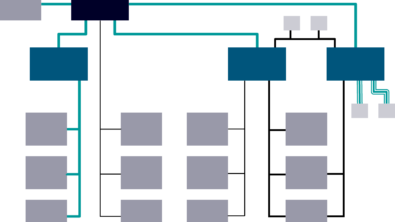Siemens Hypervisor: Fulfilling the vision for today’s IVI systems

No doubt, when designing today’s In-Vehicle Infotainment (IVI) systems there’s a lot to consider.
There are many complexities from simple dash read-outs and back-up cameras to phone-based interfaces such as Apple Car Play or Android Auto, to ADAS, the human machine interface (HMI), to how the vehicle communicates with other vehicles (V2V) or within the vehicle infrastructure (V2I).
One thing is for sure, automotive OEMs are seeking ways to reduce costs and increase functionality while improving, or even enhancing the overall user experience. Current approaches are both cost-prohibitive and lacking in performance.
And here’s where it gets interesting.
Utilizing virtualization in automotive software architecture provides a better approach when taking on these IVI complexities. This can be achieved by encapsulating different heterogeneous automotive platforms inside virtual machines running on the same hardware. This approach not only provides a more efficient way for the technology to communicate but reduces the cost of adding a dedicated microcontroller (MCU) to each platform.
The latest approach – consolidating IVI capabilities on a single chip
In the white paper, “Using hypervisor for IVI and AUTOSAR consolidation on a single ECU” you’ll gain a deeper understanding on how to achieve virtualization within an IVI system. Such an approach not only provides a more efficient way to implement vehicle communications, but reduces the cost of adding additional MCUs to each platform.
The white paper also touches on:
- Why current approaches fall short
- Types of virtualized environments and methodologies
- Utilizing Arm TrustZone
- The critcal role of the Siemens’ Nucleus Hypervisor
- How AUTOSAR completes the picture
I urge you to download the white paper!
Siemens’ Nucleus Hypervisor
The Siemens’ Nucleus Hypervisor is key to all this. The flexibility of the hypervisor allows users to decrease the intervention of the hypervisor to a minimum, so it doesn’t interfere with real-time operations. The hypervisor also supports standards such as VirtIO for virtual devices or AUTOSAR for in-vehicle, real-time applications.
The techniques and technologies discussed in the paper should encourage automotive standardization groups to come together and adopt a more standardized approach to virtualization.
If you’re a systems architect or an AUTOSAR developer who’s totally into multicore ECU development, you may find this on-demand webinar interesting.
Finally, for more information, please visit the Siemens AUTOSAR product family website.
Scott Salzwedel is a senior technical writer and corporate communications writer involved in the Siemens Aerospace & Defense Industry and Siemens Capital. Scott is also the writer/host of the Siemens podcast Talking Aerospace Today.


